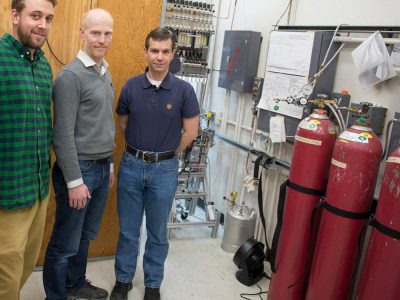By Ahmed Minhas
Devang Ghosh didn’t expect to win when he submitted his class project to one of the world’s most prestigious design competitions. He just wanted to see how far he could take it. And he’s glad he did.
The third-year Carleton University Industrial Design student received a “Best of the Year” title in the 2025 International Forum (iF) Design competition’s Student Design Award, beating more than 7,000 entries globally.
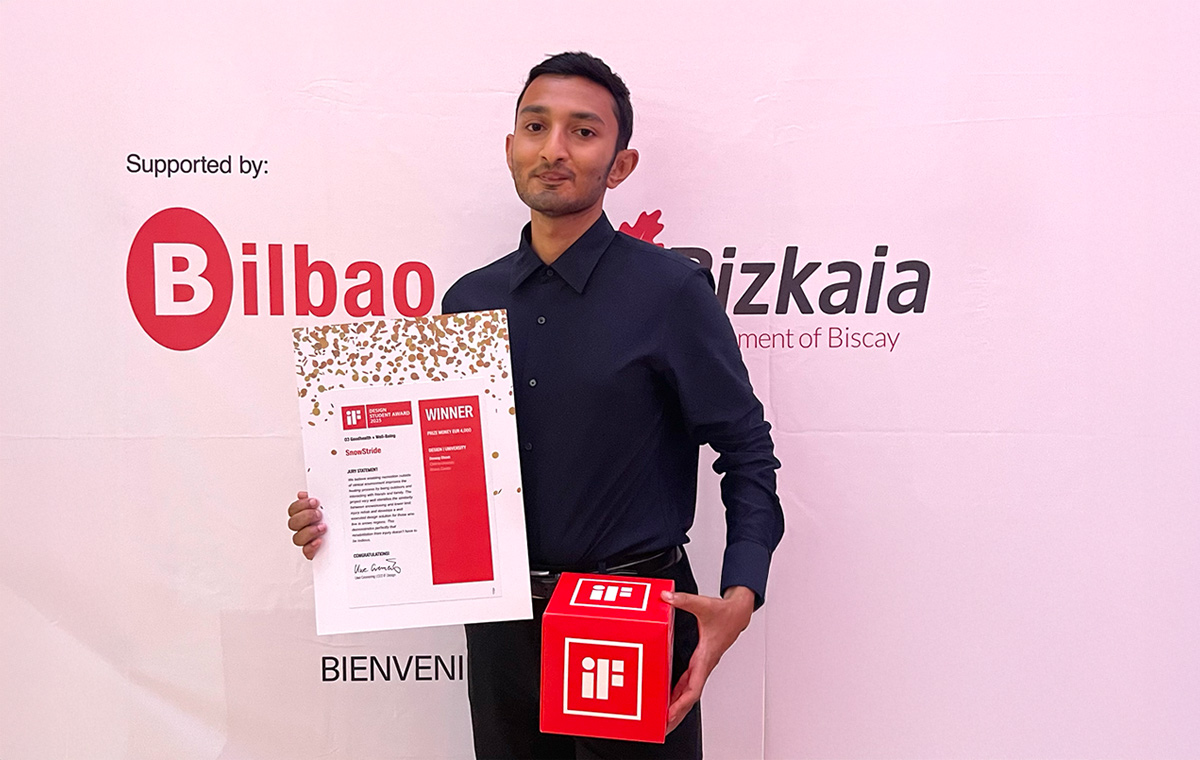
Carleton University Industrial Design student Devang Ghosh holds his award for “Best of the Year” at the iF Design Student Awards.
Ghosh’s project, SnowStride, is one of just nine recognized with the competition’s highest student honour. In June, he was celebrated on stage at the Guggenheim Museum in Bilbao, Spain, in front of an audience of peers, judges and design leaders.
At what he calls the “Oscars of industrial design,” the win wasn’t just a personal milestone — it was a first for Carleton and for Canada.
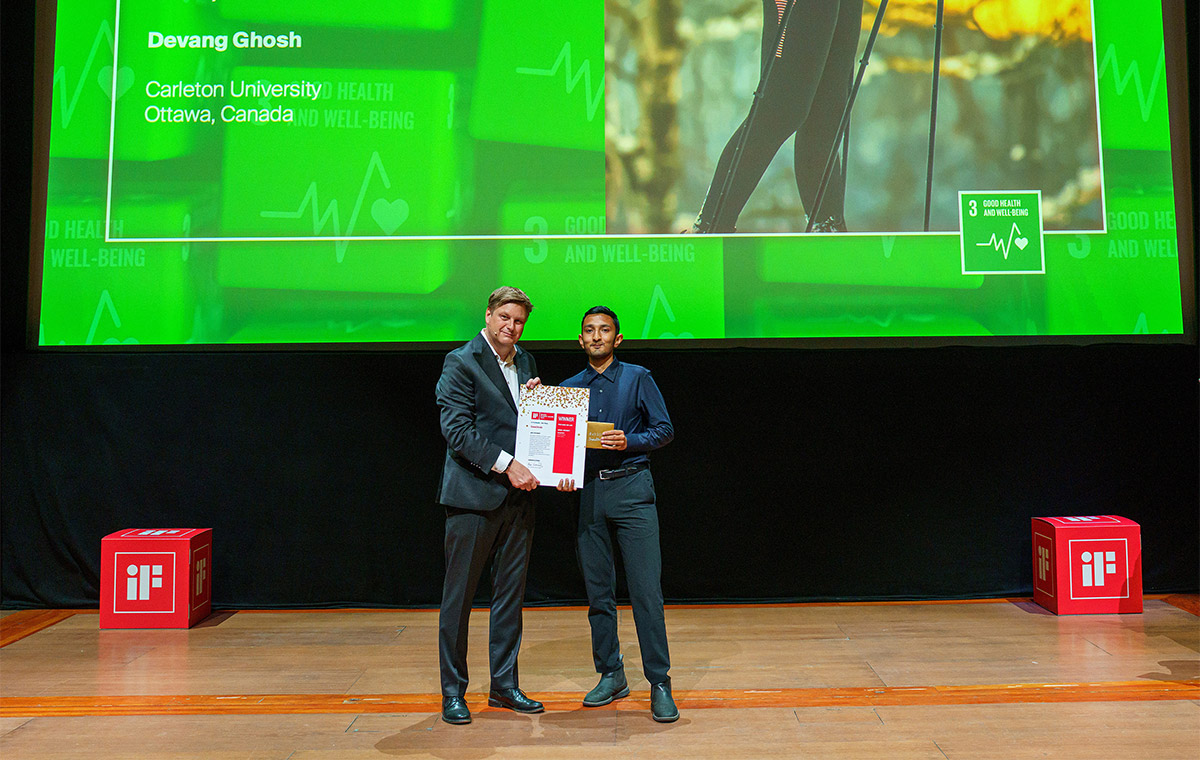
Rehabilitation Reimagined Through Design
Ghosh’s winning design is a snowshoe-inspired mobility aid for people recovering from lower-leg injuries. SnowStride is a fully functional, field-tested and user-focused rehabilitation device.
“I wanted to make rehabilitation more accessible and fun,” says Ghosh.
“I looked at different physical activities to see if there’s an overlap between the activity and something that’s useful for rehabilitation. I noticed that the biomechanics of snowshoeing is very similar to lower-leg injury rehabilitation.”
He spent months building and refining the design, testing it on snow and hilly terrain. He also tested different handle orientations to figure out what feels natural. Designing for lower-leg rehabilitation forced Ghosh to think differently.
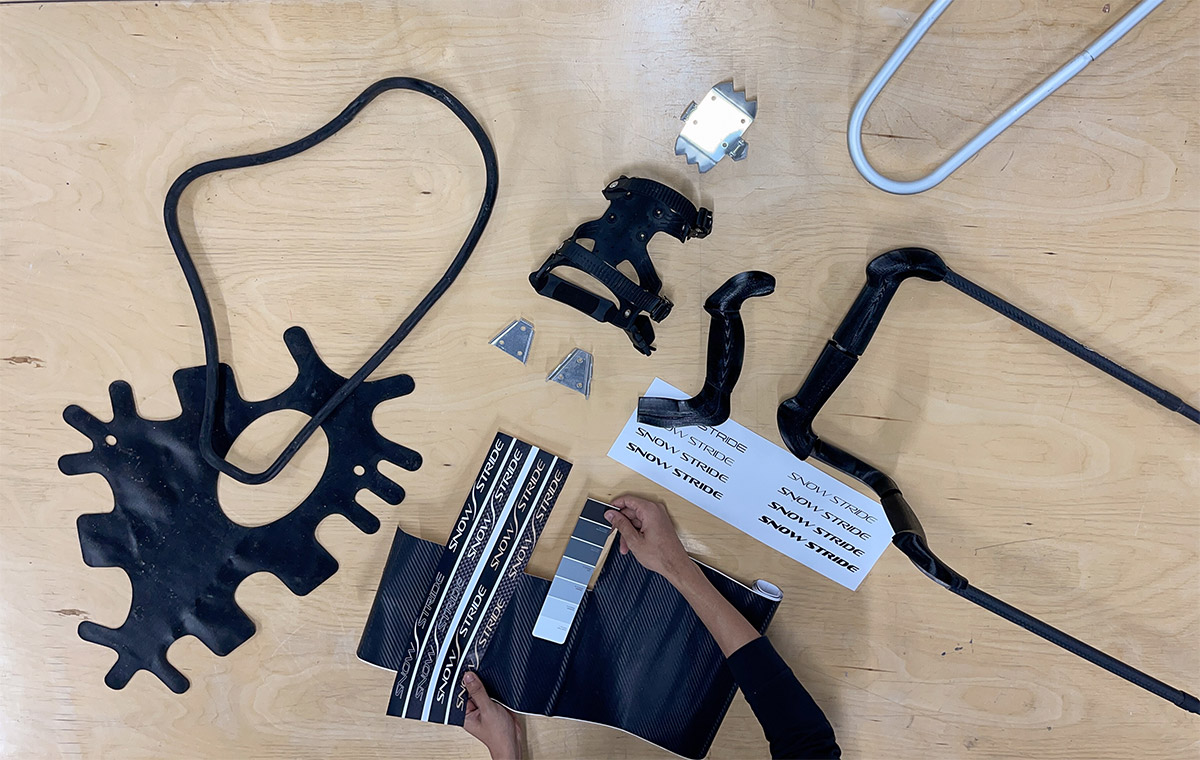
Design components of the snowshoe-inspired mobility aid, SnowStride
“Empathy was the biggest challenge,” he says.
“I’ve never had a lower leg injury myself, so I tried everything — strapping weights to my leg, testing different gait patterns and researching rehab tools.”
The final design features a wide snowshoe base connected to telescoping handles that rotate in a motion like an elliptical machine. Users engage their upper body to generate assistive force, helping lift weaker legs with each stride. A tension system adjusts the level of support for each leg, a feature that gradually decreases assistance level as the legs slowly regain strength.
He also designed custom packaging that doubles as a carrying case, considering the user’s unboxing experience, usability and storage. Even the instructions were included.
In short, Ghosh thought of everything, from accessibility and ergonomics to storage and sustainability. That attention to detail — what Ghosh calls a holistic approach — helped his work stand out on the global stage.
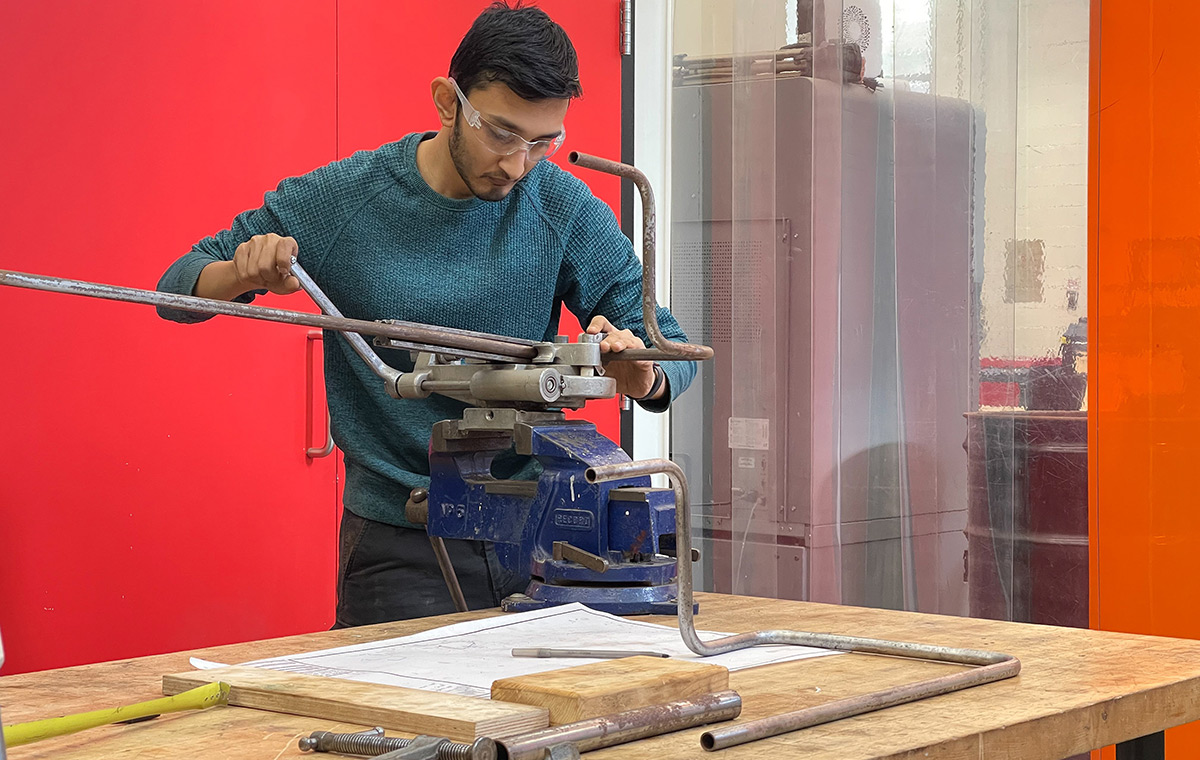
Design for Real-World Impact: Carleton’s Competitive Edge
Originally a mechanical engineering student, Ghosh transferred into industrial design after discovering a passion for creativity and applied problem-solving.
He says Carleton’s hands-on, technically grounded approach is what allowed SnowStride to evolve from a class project into something award-worthy.
“One of the main reasons I chose Carleton was because of their technical focus in industrial design and their constant push towards iterative prototyping and making something actually work,” Ghosh explains.
“A lot of design schools focus on aesthetics, which is important, but aesthetics can only get you so far. You really need to prove the concept and Carleton is great for that.”
He also values the program’s integration within the Faculty of Engineering and Design, giving the program a strong interdisciplinary foundation. He was even taught to conduct patent research — uncommon in other design schools.
Ghosh made use of the university’s workshops and labs and says the support from professors, lab technicians and teaching assistants (TA) played a major role.
“It was a constant learning process, which was aided by the lab techs and the TAs,” he says. “Even outside of class hours, I could ask them for help. It got to a point where I had so many prototypes that they asked me about my process. It felt like we were working together.”
After completing 16 months of internships in Toronto, Los Angeles and the Netherlands, Ghosh is gearing up for his capstone project.
“If I can do this much in four months, I’m really excited to see what I can do in a whole school year,” he says.
Ghosh hopes his win will bring more attention to industrial design in Canada, where the field remains relatively under-recognized. More importantly, he hopes it inspires other students to take a chance and submit their work to international competitions, like the iF Design Student Award, which requires no entry fee and offers substantial cash prizes, helping level the field for student designers.
“Just give it your all,” says Ghosh. “You never know, you might be shortlisted and go to Spain. You have nothing to lose. It’s free to enter and it’s a great experience.”

Monday, July 28, 2025 in Awards, Engineering, Health, Industrial Design, Innovation
Share: Twitter, Facebook



